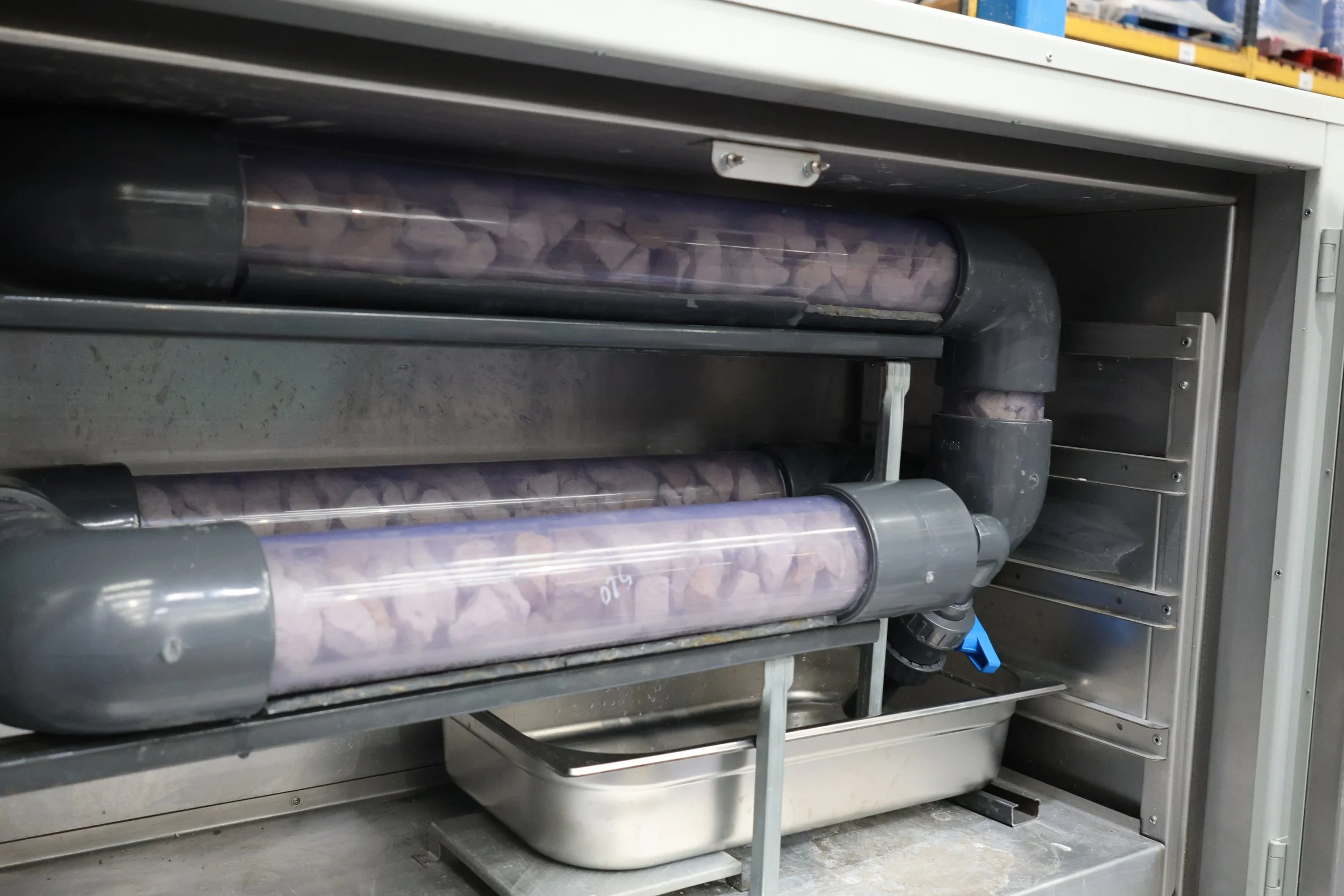VitriPatch is a chemically engineered LCM system combining dissolvable glass and calcium carbonate to form a thixotropic, expanding slurry that mineralizing into a solid, rock-like structure under downhole conditions.
What sets VitriPatch apart is its unique ability to accelerate this mineralizing reaction upon contact with carbonate rock downhole, triggering a rapid hardening response that makes it exceptional effective in sealing severe to total losses in carbonate and calcium-rich formations. While this reactive mechanism offers a step-change advantage in carbonate reservoirs, VitriPatch is also designed for broad applicability, forming durable, pressure-bearing seals in fractures and voids across a range of formations including sandstone and shale.
Benefits
Rapid pressure bearing seal created in large voids
Acid-soluble formulation enables efficient post-treatment clean-up
Prevents non-productive time caused by severe to total lost circulation
Stable under high-temperature (HT) conditions (tested up to 150°C and 230 bar)
Integrates with standard drilling fluid additives and lost circulation materials (LCM)
Compatible with a range of conventional mud and cementing systems
Flexible particle sizing enables pumping through drill bits and bottomhole assemblies (BHA)
Key Features
Demonstrated sealing in fractured limestone, sandstone, and shale cores
Effectively cures losses under dynamic conditions in 1 in (2.5 cm) and larger holes in carbonates
Suspension-stable system with a density range of 10.8 to 15.0 ppg (1.30–1.80 sg) and pH ~3.0
Expands to fills large voids and fractures, including vugular zones and extensive fracture networks
Rapidly accelerates mineralization upon contact with carbonates and calcium-rich rock
Ability to create a bespoke LCM pill system: available as liquid or powder glass form and compatible with a wide range of standard LCMs
Applications
Total or partial loss zones in carbonate, sandstone, and shale
Vugular and large fracture contributing to severe lost circulation
Ballooning zones requiring durable seals to prevent pressure bleed back into the wellbore
Transition zones between depleted sands and shales layers
Uncemented and weak sand where stability is achieved by wedging mechanisms
Wellbore strengthening in depleted reservoirs
Reservoir drilling where LCM removal via acid wash is needed to minimize production impact













